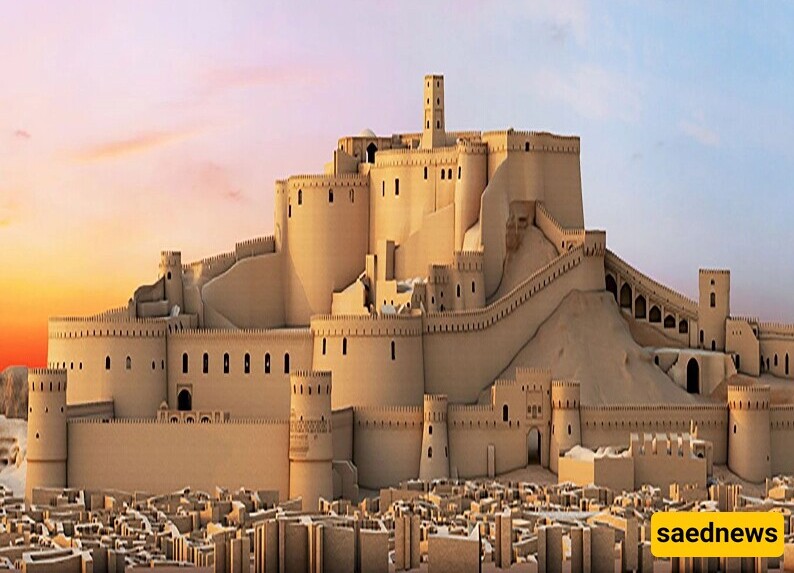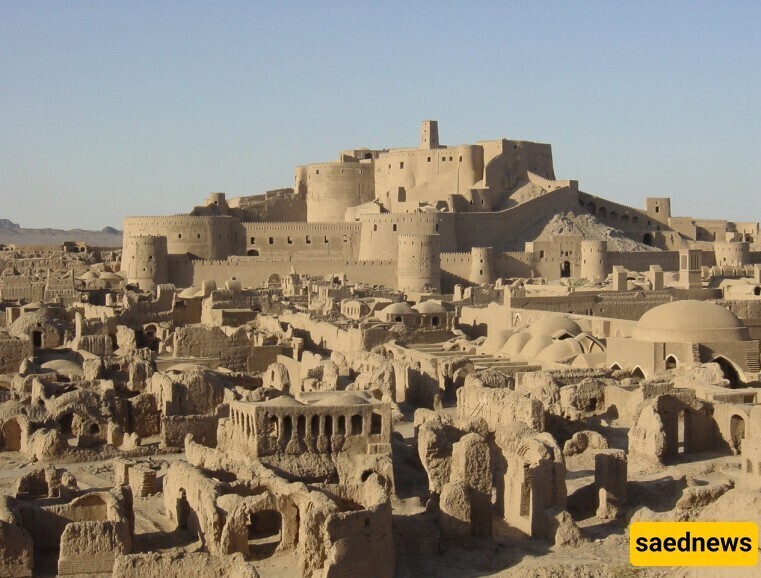Saadnews: The Bam Citadel is the largest mudbrick historical structure in the world, located in the city of Bam in Kerman province, southeastern Iran.

According to the tourism service of Saadnews, how is it possible that a structure like the Bam Citadel, built a thousand years ago from mud, straw, and bricks in the middle of the desert, withstands one of the country's most severe earthquakes, receives no significant restoration, yet still stands? The Bam Citadel in Kerman remains, like a diamond of earth's color, built from nothing and with the dedication of the people of this region, even the devastating earthquake could not destroy it.

Where is the Bam Citadel?
The Bam Citadel is located at the easternmost point of the city of Bam. Now that Bam has become a city, it is almost entirely surrounded by new buildings, so the address reaches the streets of the city.
Address of the Bam Citadel, Kerman
The address of the Bam Citadel is in Kerman, Bam city, and Bahman street. You can easily reach the citadel by traveling to Kerman and Bam. If you look at the sky, the Lut Diamond has created a star of light to mark its location.
Address: Kerman Province, Bam City, Bahman Street.

Visiting hours of Bam Citadel
Visiting hours of the Bam Citadel in Kerman:
In the first six months of the year: 7:30 AM to 7:00 PM.
In the last six months of the year: 7:30 AM to 5:00 PM.
Bam Citadel Before the Earthquake

Bam Citadel in Kerman is one of those strange sights that leaves you in awe of its grandeur. This stronghold was once on the Silk Road and was one of the major communication routes connecting Iran with Central Asia, the Persian Gulf, and Egypt, before it was abandoned for unknown reasons.
This historical structure is a massive ancient city made up of two sections: a government area and a residential area. Bam Citadel covers an area of 18,000 square meters, with walls reaching up to 7 meters in height. The citadel’s interior is filled with narrow alleyways and intertwining walls that separate various parts of the city. If I were to describe the Bam Citadel before the earthquake, it would resemble a maze with tall adobe walls.
Bam Citadel was included in UNESCO's World Heritage List in 2004 due to its unique features until the Bam earthquake in 2003, which destroyed it.
Photos of Bam Citadel Before the Earthquake
Everyone is curious to see what Bam Citadel looked like before the earthquake. In this section, you can view some photos of Bam Citadel before the disaster.




Bam Citadel After the Earthquake
In the history of the Islamic Republic, two very large earthquakes are recorded as some of the most tragic events: the 1990 Rudbar earthquake and the 2003 Bam earthquake. These events caused the death of thousands and destroyed what was once considered the safest point of Iran's desert.
Although Bam Citadel had been listed as a global tourist attraction by UNESCO for years, the earthquake removed it from the list and added it to the list of sites under threat of destruction. Perhaps this earthquake was a divine reminder to pay attention to our history.
Despite being heavily damaged by the earthquake, Bam Citadel did not die. If you compare the photos of Bam Citadel before and after the earthquake, you will quickly recall the images of Hiroshima and Nagasaki after the disaster.
The UNESCO representatives determined in the early days that the "Champion of the Desert" would not stand again. However, as I mentioned before, Iranians are known for achieving the impossible. From that year (2003), a restoration committee was formed, and the world began to work on the reconstruction of the Bam Citadel.
In 2003, after the earthquake, the Bam Citadel was removed from UNESCO's World Heritage List and placed on the list of endangered sites. However, after extensive restoration efforts, UNESCO's World Heritage Committee removed it from the endangered list in 2013.
While most specialists worked on research projects until 2008, by 2013, UNESCO accepted that the "Champion of the Desert" was not dead. From 2008 to 2013, UNESCO approved the reconstruction and restoration of this world heritage site and removed it from the list of sites at risk of destruction.
In addition to the local people of Bam and Kerman, who contributed to 90% of the reconstruction, three countries—France, Japan, and Italy, along with UNESCO—provided significant help in rebuilding the Bam Citadel. One contributed thousands of euros and a 3D map of the citadel, another handled much of the research and funding, and finally, the people of Iran worked with their hands, like their ancestors, to build a more robust and enduring Bam Citadel.
Photos of Bam Citadel After the Earthquake
Perhaps I can confidently say that the photos of Bam Citadel after the earthquake in Kerman are some of the most heartbreaking images one can see. Watching the ruins of such a grand fortress brings pain to every viewer's heart.





